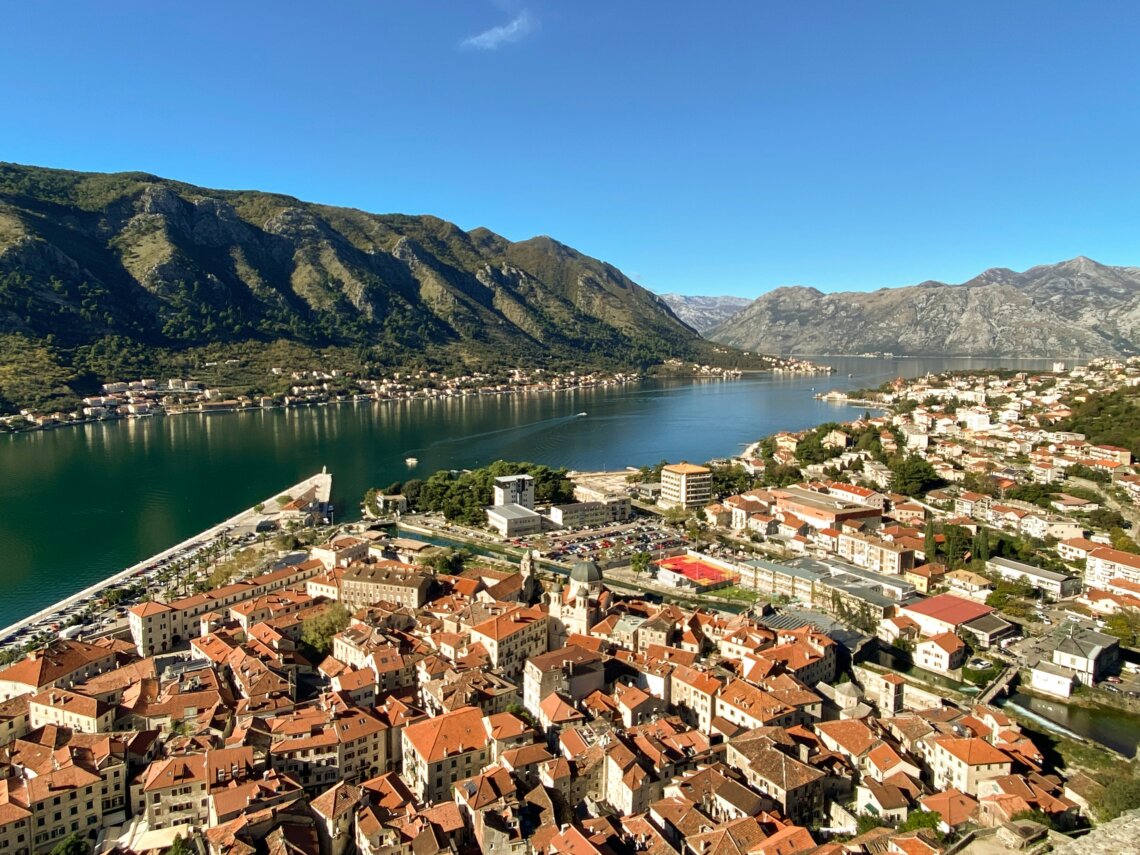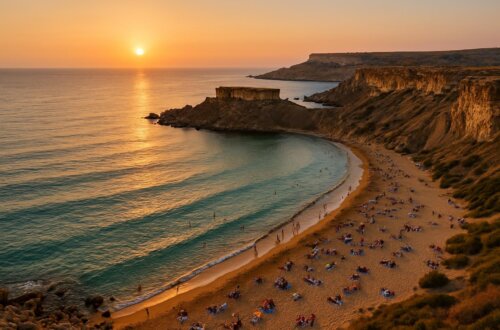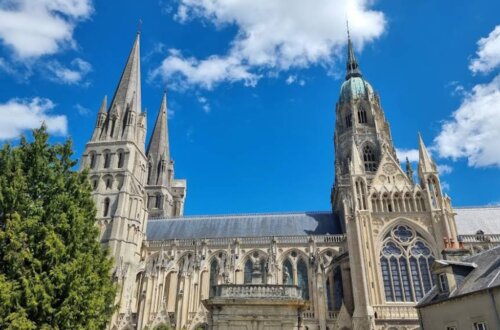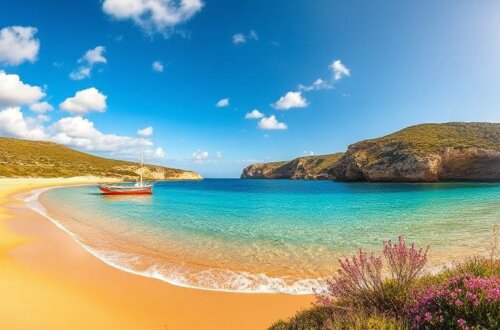
Top Things to Do in Kotor, Montenegro: Your Ultimate Travel Guide
Top Things to Do in Kotor, Montenegro: Your Ultimate Travel Guide
Nestled on the dramatic coastline of the Adriatic Sea, Kotor, Montenegro, is a captivating blend of history, natural beauty, and cultural richness. With its fortified Old Town, winding medieval streets, and stunning bay views, Kotor has become a must-visit destination for travelers seeking authentic experiences off the beaten path. Yet, with so many attractions, activities, and hidden gems, figuring out what to do in Kotor can feel daunting. This guide will take you through all the top things to do in Kotor, Montenegro, from exploring ancient streets and hiking to panoramic viewpoints to savoring local cuisine and enjoying outdoor adventures. By the end, you’ll have everything you need to plan a memorable trip to this Adriatic treasure.Explore Kotor Old Town: Step Back in Time
The heart of Kotor is its Old Town, a UNESCO World Heritage site that seems frozen in time. Walking through its cobblestone streets is like stepping into a medieval painting, with Venetian architecture, quaint squares, and historic churches at every turn. Must-See Attractions:- St. Tryphon Cathedral: This 12th-century Romanesque cathedral is one of Montenegro’s most iconic landmarks. Its bell towers, intricate façade, and richly decorated interior make it a photographer’s dream. Don’t miss the treasury, which houses relics from Kotor’s fascinating maritime past.
- Maritime Museum: Kotor has been a key seafaring hub for centuries, and the Maritime Museum showcases ship models, navigational instruments, and historic artifacts detailing the town’s relationship with the Adriatic Sea.
- Kotor City Walls: Stretching for 4.5 kilometers, the city walls wind steeply up the surrounding hills. Hiking them provides breathtaking views of the Old Town and the bay below.

Hike to the Castle of San Giovanni: Rewarding Views
Rising dramatically above Kotor, the Castle of San Giovanni (also known as St. John’s Fortress) is both a historical marvel and a natural spectacle. The hike may be challenging, but the panoramic views of the Bay of Kotor are more than worth the effort. Hiking Details: – Duration: 1–2 hours depending on your pace. – Difficulty: Moderate; steep steps and uneven terrain. – Best Time: Early morning for sunrise or late afternoon to catch golden-hour lighting. Why Visit: The fortress dates back to the 9th century and was once a critical defense point against Ottoman invasions. Along the way, you’ll pass small chapels, historic fortifications, and scenic viewpoints that gradually reveal the bay’s dramatic curves. Practical Tips: – Wear sturdy shoes and bring water and sun protection. – Allow time for photography; the panoramic view of terracotta rooftops against the deep blue bay is spectacular. – Consider hiring a local guide who can share historical anecdotes and hidden spots along the trail.
Discover Kotor’s Surrounding Villages
While Kotor’s Old Town is enchanting, the surrounding villages offer equally unforgettable experiences. Exploring these smaller towns provides insight into Montenegro’s culture, architecture, and slower pace of life. Perast: A short drive or boat ride from Kotor, Perast is a tiny Baroque village known for its elegant palaces and the famous Our Lady of the Rocks island. Visitors can take a boat trip to the island church, which is steeped in legend: local sailors built it over centuries by depositing rocks and treasures. Dobrota: Just a few minutes from Kotor, this village boasts a peaceful seaside promenade lined with historic homes and quaint restaurants. It’s perfect for a sunset stroll or a quiet afternoon away from the crowds. Risan: Often overlooked, Risan is home to Roman mosaics that date back nearly two thousand years. The mosaics depict scenes of daily Roman life and provide a fascinating glimpse into Montenegro’s ancient past. The village is also surrounded by vineyards producing local wines. Tips for Day Trips: – Take a local taxi or rent a car for flexibility. – For a scenic alternative, consider a boat tour along the Bay of Kotor that stops at each village. – Wear comfortable shoes, especially if exploring historic streets or mosaics.Enjoy Outdoor Activities in Kotor
Kotor isn’t just about history; it’s also an adventure lover’s playground. From water sports to cycling and hiking, there’s no shortage of ways to enjoy the outdoors. Adventure Highlights: – Kayaking: Paddle through the calm waters of the bay, discovering hidden coves and cliffside villages. Early mornings offer glassy water perfect for reflection photography. – Sailing Tours: Sail along the Adriatic coast to capture postcard views of the fjord-like bay. Consider sunset tours for a magical experience. – Cycling: Rent a bike and follow coastal paths or venture up nearby hills for panoramic views. – Swimming & Snorkeling: Find secluded beaches like Plavi Horizonti, where turquoise waters are ideal for swimming and snorkeling. Tips: – Book guided tours if unfamiliar with local waters. – Morning excursions are calmer and less crowded. – Pack sunscreen, water, and a hat for comfort.Savor Montenegrin Cuisine in Kotor
Kotor’s culinary scene is a delightful blend of Mediterranean and Balkan flavors. Local ingredients, fresh seafood, and traditional recipes make dining here a highlight of any trip. Must-Try Dishes: – Njeguški Pršut: Smoked ham from the nearby village of Njeguši, often served with local cheese and olives. – Fresh Seafood: Grilled fish, calamari, mussels, and octopus caught daily from the Adriatic Sea. – Pita od Sira (Cheese Pie): A staple snack sold in bakeries and cafes throughout the town. Top Restaurants: – Konoba Catovica Mlini: Offers riverside dining with traditional seafood dishes and homemade wines. – Galion: Located on the waterfront, perfect for watching the sunset over the bay while enjoying local cuisine. – Local Markets: A great place to sample regional delicacies, fresh bread, cheeses, and olives. Tips: – Try multiple small dishes rather than one large meal to experience a variety of flavors. – Book a table for sunset dining-it’s worth it for the views alone.
Experience Kotor’s Festivals and Culture
Kotor is not just a feast for the eyes; it’s also a vibrant cultural hub. Throughout the year, festivals and events bring the town to life with music, dance, and art. Key Events: – Kotor Carnival: Held in February, this colorful event features parades, traditional costumes, and lively street performances. – Summer Music and Art Festivals: Throughout June to September, enjoy concerts, exhibitions, and performances in historic venues. – Local Crafts: Shop for handmade ceramics, textiles, and jewelry created by local artisans. Tips: – Check festival calendars in advance to align your visit. – Arrive early for parades and main events to secure a good vantage point. – Don’t be afraid to engage with locals-Montenegrins are friendly and proud of their heritage.Relax at Kotor’s Natural Spots
For travelers seeking tranquility, Kotor offers a variety of natural escapes that balance sightseeing and relaxation.- Plavi Horizonti Beach: Ideal for families and swimmers, this beach features clear, shallow waters and soft sand.
- Lovćen National Park: A short drive from Kotor, the park offers hiking trails, wildlife spotting, and breathtaking views of the surrounding mountains and coastline.
- Bay Viewpoints: Numerous cliffs and high points around Kotor provide postcard-worthy panoramas, perfect for photography or quiet contemplation.
Practical Tips for Visiting Kotor
Planning is key to maximizing your Kotor experience. Here’s what you need to know:- Best Time to Visit: Late spring (May-June) or early autumn (September) for mild weather and fewer tourists.
- Transportation: Tivat Airport is the nearest, with bus, taxi, and rental car options to reach Kotor. Ferries and boats also connect nearby towns.
- Currency & Language: Montenegro uses the Euro (€). Montenegrin is the official language, though English is widely spoken in tourist areas.
- Safety & Etiquette: Kotor is very safe. Dress modestly in churches and always respect local customs.
- Accommodation: Old Town lodgings offer historic charm; waterfront hotels provide stunning bay views. Booking in advance during peak season is recommended.
Conclusion: Your Perfect Kotor Itinerary
Kotor, Montenegro, is a destination that effortlessly combines history, culture, adventure, and relaxation. Whether you wander the medieval streets of Old Town, hike up to panoramic viewpoints, savor traditional cuisine, or explore neighboring villages, every corner of Kotor offers a story and a memory. By following this comprehensive guide to things to do in Kotor, travelers can create an itinerary that balances sightseeing, outdoor adventure, and cultural immersion. Pack your comfortable shoes, camera, and curiosity-Kotor is ready to enchant you. Share your experiences, photos, and tips with fellow travelers, and let Kotor’s magic inspire your next adventure.External Links / References: – UNESCO World Heritage – Kotor – Visit Montenegro – Official Tourism Site – Lovćen National Park




